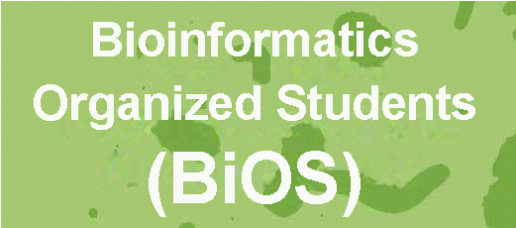Student Seminar: Jonathan Dreyfuss
Speaker: Jonathan Dreyfuss
Adviser: James Galagan
Title: Genome-scale metabolic reconstruction and validation of the filamentous fungus Neurospora crassa
ABTRACT
Studies of the model organism Neurospora crassa have laid the foundation for genetics, biochemistry, and molecular biology over the past century. Despite this rich history, no one has systematically integrated the detailed knowledge of its metabolism to accurately predict growth phenotype from its genotype. Based on an extensively curated knowledge base (NeurosporaCyc) and a novel optimization-based method called Fast Automated Reconstruction of Metabolism (FARM), we trained a genome-scale model of Neurospora using a curated list of gene knockout and supplemental rescue phenotypes until our predictions were highly consistent with experiment. We then validated the predictive power of our model with an independent test set, achieving >93% specificity and sensitivity. I will discuss the status of the project and the methods I developed, which may be useful to others involved in metabolic flux analysis.
Student Seminar: Wen-Han Yu
Speaker: Wen-Han Yu
Adviser: James Galagan
Title: Exploring temporal dynamics of transcriptional regulatory networks in Mycobacterium Tuberculosis by using synthetic genetic clock
ABTRACT
M. tuberculosis is known as a primary pathogen in the mammalian respiratory system and kills two million people every year. One-third of the world’s population harbors latent M. tuberculosis causing chronic, asymptomatic infections and reducing its susceptibility in drug treatment. In this study, we explore how M. tuberculosis activates dormancy in response of the environmental stimulus at gene-regulatory level and, more specifically, parameterize the dynamic gene-expression functions of regulators to target genes on either direct or indirect connections in the network. To do so, we constructed a synthetic self-sustaining oscillator-driving system with tunable period and amplitude in Mycobacteria, which provides a long-period dynamic perturbation of input regulators. The system in advance improves the ability for system identification of kinetic network model. We applied it into two simple networks, including single-edge, and feed-forward loop network motif. The temporal dynamics of each individual gene expression represented in fluorescent reporters in vivo were profiled by the time-lapse microscopy at single-cell level. By probing different pairs of regulators and targets as well as FFLs in the network, we will reveal the relationship of the regulator binding affinity and temporal regulation, and combinatorial effects when multiple regulators occur to a single target. The refined regulatory network model will be able to delineate all downstream target gene temporal expressions given a regulator condition over time. In addition, by single-cell measurement, we can also probe the initiation of cell-to-cell variability at regulatory network level. Overall, the network model will provide insight into M. tuberculosis responses to the environmental changes during dormancy.
Student Seminar: Brian Granger
Speaker: Brian Granger
Advisers: John Finnerty and Daniel Segrè
Title: Construction of Transcriptomic Databases and Analyses, and Virtual Metabolic Interactions of Microbes.
ABTRACT
My research has two separate aspects which I would eventually like to bring together. The first aspect of my research is to understand cnidarian organisms, such as coral and sea anemones, and especially how they respond to stress and develop into different body plans throughout their life. To this effect the coral Pocillopora damicornis, and the parasitic sea anemone Edwardsiella lineata have had their transcriptomes sequenced, assembled, and stored in databases along with annotation from NCBI, amiGO, KEGG and Pfam. These databases are available for querying through an online web interface, and have already offered insights about the coral's ability to deal with environmental stressors, and the sea anemone's ability to modify it's body plan for it's various life stages, including a novel parasite form. The secondary aspect of my research involves understanding the microbes involved in an environmental system and being able to model their dynamics, and in particular, their symbiosis in system of microbes. A modeling system for metabolic models has been made called COMETS (Computation Of Microbial Ecosystems in Time and Space) which allows for simulation of many organisms at a time in a 2 dimensional environment with a pooled media where metabolites can be exchanged and diffused. This system allows for testing of theoretical microbe combinations in a virtual petri dish which may not otherwise be possible to conduct in a lab. Eventually this platform may be able to simulate a coral animal, and the consortium of microbes that live in and on it, along with the intracellular symbiotic algae, and be able to track the exchange of metabolites between all of them, and how this might change under various conditions.
Student Presentation: Sara Garamszegi
Sara Garamszegi received a travel fellowship from the the Swiss Foundation for Excellence and Talent in Biomedical Research to present her poster at the European Conference on Computational Biology (ECCB’12). The conference was held at the Congress Center in Basel, Switzerland. Transcriptional correlates of disease outcome and immune response of non-human primates to hemorrhagic fever viruses
Student Presentation: Tanggis Bohnuud
Tanggis Bohnuud presented a poster at the European Conference on Computational Biology (ECCB'12). The conference, held at the Congress Center in Basel, Switzerland, was the key European computational biology event in 2012 uniting scientists working in a broad range of disciplines, including bioinformatics, computational biology, biology, medicine, and systems biology.
Student Presentation: Badri Vardarajan
Badri Vardarajan, from Prof. Lindsay Farrer’s Biomedical Genetics (link) group, presented a poster, Identification of gene-gene interactions for Alzheimer disease using co-operative game theory (pop-up when available), at the International Conference on Alzheimer's Disease - AAIC 2011 in Paris in July.
AAIC 2011 drew a record-breaking number of dementia scientists to Paris to share the latest ideas, thoughts and theories in the field. Breaking studies captured global media attention as the world's leading experts, explored innovative ways to further Alzheimer's research.
Student Seminar: Richard Park
Speaker: Richard Park
Advisers: Peter Park & Simon Kasif
Title: Seqeyes: A multi-scale interactive visualization tool for structural variations
ABTRACT
Genomic structural variations (SV) are known to play an important role in cancer and other diseases. Next-generation sequencing is a key technology for the identification of such variations, but current data and algorithms yield many false positives and false negative predictions. We have created a visualization tool called Seqeyes to explore and interpret predicted structural variations to help guide experimental validations. Users can sort, filter, and aggregate samples based on clinical attributes, which facilitates the association of phenotypes with specific patterns of structural variation. Our tool provides a combination of linear and circular representations. Two genome browser views show detail at multiple locations concurrently, while the circular ideogram view provides a global summary. Multiple molecular data types including copy number, gene expression, and methylation microarrays for each sample are integrated as additional genomic tracks. We leverage advanced open-source indexes available from Postgresql and Postbio to greatly enhance the speed and amount of data available to visualize. Seqeyes is a novel multi-scale visualization that can interactively navigate dozens of genomes down to individual sequencing reads within a web browser.
2009 Student-Organized Symposium, June 3rd
Organization of each aspect of this symposium is controlled by the entire Bioinformatics Program graduate student community, including the selection of a theme, proposal of candidate speakers, and ultimately voting for invitees. This year’s theme of Bioinformatics and Human Health was at the forefront of many students’ minds. Join us to hear a panel of scientific innovators from the academic and private sectors share their work and ideas as they relate to this highly important field. The Symposium is free and open to the general public.




